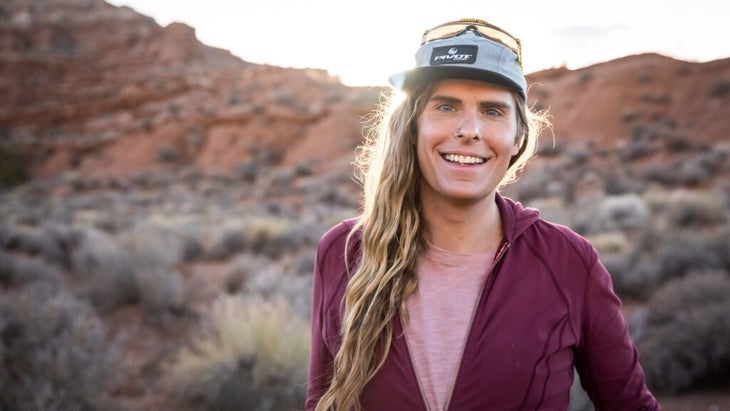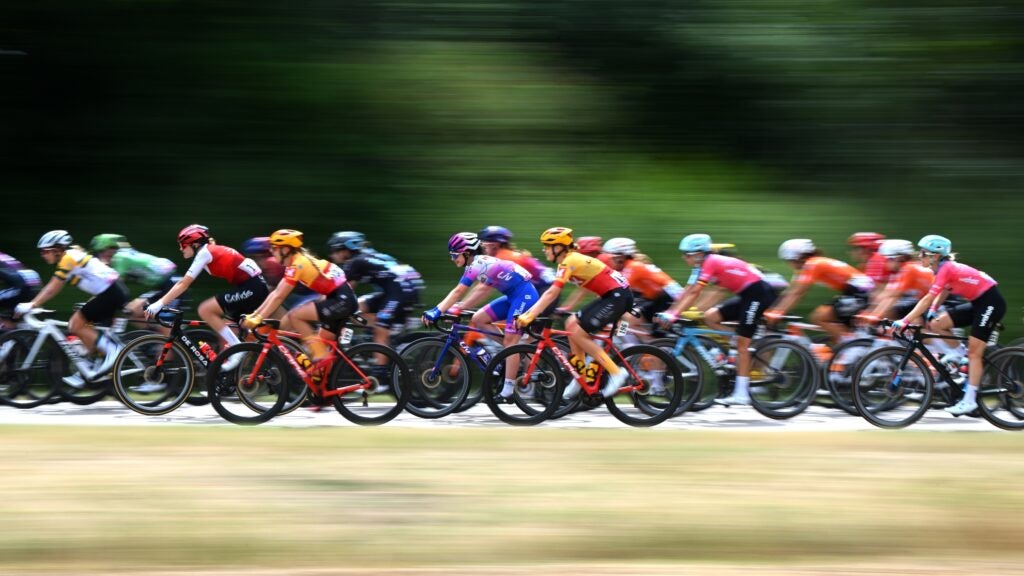No products in the cart.
Outdoor Adventure
The Real Threat to Cycling Isn’t Trans Athletes—It’s Sexism
I participated in my first paid photoshoot as a professional mountain biker eight years ago, and was thrilled when I signed my first global contract with Pivot Cycles in 2021. It felt like a childhood dream realized to be able to have a career in action sports. My career as an athlete is a little complicated, though. As a trans woman, bike racing has always felt like a lose-lose proposition for me. If I do well, I risk getting called a cheater, or even worse, becoming a Fox News headline. If I do poorly, my sponsorship feels like tokenization rather than something earned. Even before transitioning in 2020, seeing the hate directed at trans women athletes made me feel like competitive sports was a dead end for me. I decided to risk life and limb in the high-risk sport of freeride mountain biking, where instead of competing against each other, we test our skills riding the biggest and hardest things we can find.
As my career picked up traction in the freeride space, I gained sponsorships and invites to women-centered jump jams, including as a digger at Red Bull Formation. I was regularly asked if I wanted to race by fellow female riders. But it always felt like an impossible tightrope to walk, where I felt I needed to justify my sponsorship, but not elicit transphobic hate and backlash. This always stung, because I felt my skill as a strong technical rider actually applied better to racing.
On July 8, I finally lined up for my first race, the Sturdy Dirty, an all-women’s enduro hosted annually in North Bend, Washington. I went because the event organizers and a number of pro cyclists encouraged me to compete. Lining up for that race was the scariest thing I’ve done on a bike. I was venturing into the very place I swore to avoid for my own mental health and safety.
Contrary to the popular baseless narrative around trans women in sports, I did not dominate. In fact, I DNFed on my first stage with a mechanical issue. If I had finished the race, I probably wouldn’t have even podiumed. In the field was an Olympian, a teenage phenom, and several other extremely quick pros who have dedicated their careers to going as fast as possible—all athletes who I admire and respect the hell out of.
Less than a week later, the Union Cycliste Internationale (UCI) barred all trans women who did not medically transition before the age of 12 from competing in the women’s category, relegating them to a renamed “Men/Open” category. In light of the rule change, USA Cycling announced it will “revise its elite competition eligibility accordingly.” The UCI’s decision immediately and unceremoniously ended the careers of the handful of trans women in elite racing. The organization’s reasoning relies on dated and cherry-picked science around male puberty that largely reinforces sexist ideas about female athletes.
When we hear the phrase, “protect women’s sports,” we must dig deeper and explore what exactly we are protecting. Most importantly, why do women’s sports need protecting? The answer has very little to do with trans women, and a lot to do with the systemic barriers that have created the performance gap between men and women in athletics.
First, we have to start with a simple truth: men’s sports have a multi-generational headstart on women’s sports. Title IX, which prohibits sex-based discrimination in education programs or activities that receive federal funding, just turned 50 last year. But major men’s sports leagues like the NHL and MLB are more than 100 years old. Have you ever watched men’s sports of yesteryear? The players are significantly slower and sloppier compared to today’s standards. By all metrics, female athletes are playing a game of catch-up with male athletes. And while we’re busy getting stronger, faster, and more skilled with a fraction of the support men’s athletics gets, the world has decided the performance gap is innate, and we are inferior.
From ill-fitting gear, to lack of data on injury prevention, to inadequate maternity leave, there is a long list of challenges facing female athletes. But for the purpose of this piece, I’ll focus on three issues: youth development, pay, and safety.
The same weekend after the UCI rule change, USA Cycling hosted its mountain bike national championship. Kat Sweet, who runs Sweetlines, a youth mountain bike program in Washington state, told me boys ages 11 to 14 were permitted to race on the professional course, while girls in the same age group were forced to ride a much easier course. By age 14, girls are twice as likely to drop out of sports than boys, according to the Women’s Sports Foundation. One of the reasons is a lower quality experience compared to boys. While boys are encouraged to progress at an early age, girls are held back. Think about how being consigned to easy terrain would impact a young woman’s long-term performance, as well as her drive to stay in the sport.
This brings us to pay. At elite levels, being a full-time professional athlete is often reserved exclusively for men, while many brands support women and other underrepresented athletes as “ambassadors,” offering product-only support or meager stipends.
In a Pinkbike survey of elite racers, one female competitor had this to say:
The top maybe three women probably do get paid equally to their male equals, but to actually make a living as a woman, you have to be a consistent top five racer. Whereas in the men’s field, I’d estimate that about a top 30 racer can make a living off of racing.
The numbers back this up, with the data collected from the Pinkbike survey showing just 1.4 percent of women cyclists earn over $100,000 per year, 10 times less than the amount of men that do. The competitive implications are drastic. Men’s cycling has a robust field of full-time athletes. These riders can focus on one goal, and one goal only: being the absolute best. On the women’s side, only a small fraction of competitive cyclists are full-time athletes. The rest have to work odd jobs just to make ends meet. They’re expected to perform at an elite level with a weekend warrior schedule.
An even more important part of performance is the question of whether athletes feel safe showing up for races. On multiple occasions, I’ve heard my friends tearfully disclose repulsive comments, unwanted groping, and even sexual assaults they’ve endured while at bike events. Harassment runs rampant through cycling, and the sport’s governing bodies have failed to step up to the plate in a proactive manner. USA Cycling requires adults to promptly report sexual misconduct to the U.S. Center for SafeSport. But the responsibility still largely falls on those being harassed to speak out. How can you come forward when the harasser is a big-name male athlete, a coach, or an employee of the brand that sponsors you?
As a trans woman, I am tired of being the scapegoat for governing bodies who claim that my community is the real threat to women’s sports. In reality, they are wasting resources on a contrived issue, while failing to address the very real problems facing women’s athletics. They mask their transphobia and sexism with a hollow claim of support for cisgender women.
In mountain biking, across downhill, cross-country, and enduro competitions, just one trans woman has ever stood on a world cup podium—Kate Weatherly at the downhill World Cup in Leogang, Austria, in 2019. And she didn’t even win. Austin Killips, who recently won a road event that sparked calls for the rule change, has a UCI world ranking in the 400s—hardly a dominant ranking. While there are isolated examples of trans women finding success in individual races and events, the data just doesn’t suggest that we are dominating.
Banning the handful of trans women that exist in cycling does nothing to address the challenges all women face, and instead perpetuates the very misogyny that justifies the inequalities that currently exist in sports. It’s time that industry leaders start investing in discussions about how to close the performance gap between men and women, rather than ban an already marginalized group from competing.

Alex Showerman is a professional mountain biker who happens to be a queer trans woman. She is an athlete, a storyteller, and an advocate. In June 2022, she was named one of the top 20 most influential people in the outdoor industry by Outside Business Journal. You can follow her on Instagram @alexshowerman.
Source link

